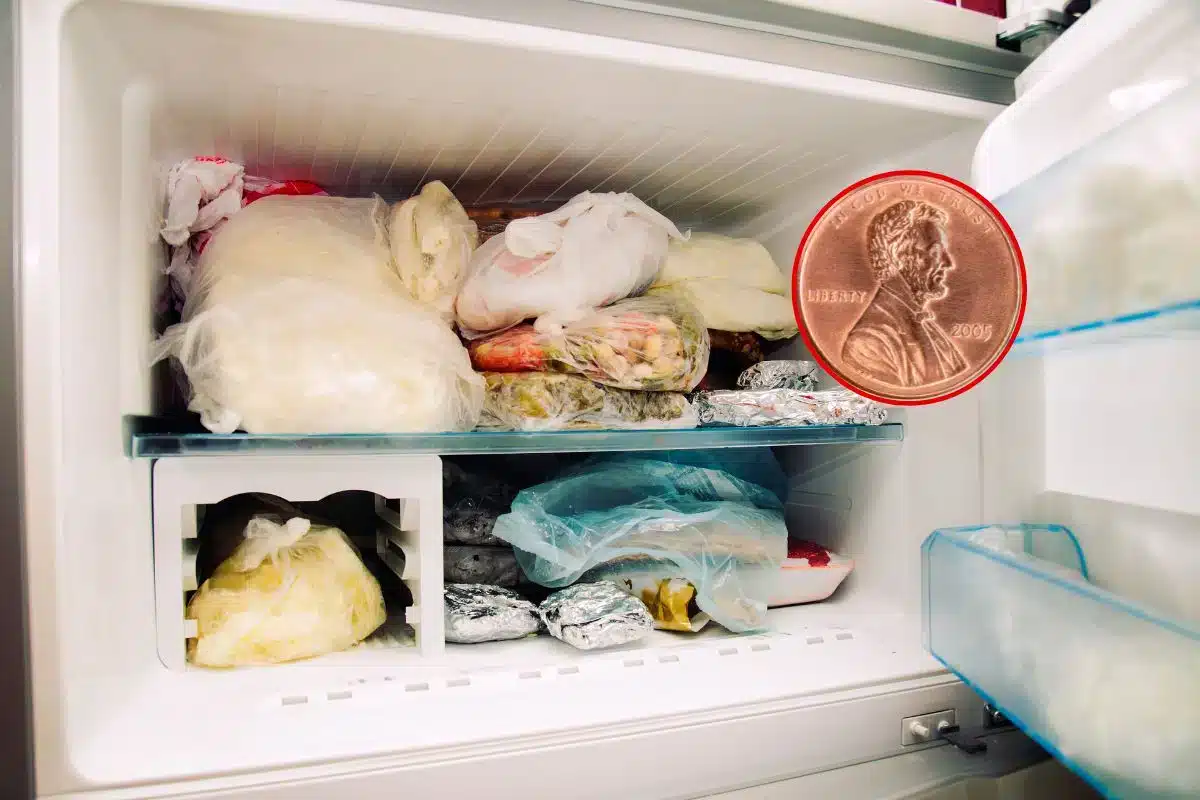The humble freezer has become indispensable in modern homes across America. From storing bulk groceries to preserving leftovers, this appliance works tirelessly to maintain our food safety. Yet few realize that a simple coin can serve as a crucial safeguard against potentially serious health issues. This little-known trick has gained popularity for good reason – it could prevent you from consuming spoiled food after returning from time away.
Why a coin in your freezer matters for food safety
In today’s busy world, many households rely heavily on frozen foods. The average American freezer contains dozens of items at any given time, from prepared meals to raw ingredients. When functioning correctly, freezers maintain temperatures cold enough to inhibit bacterial growth and preserve food quality.
However, power outages or mechanical failures can compromise freezer temperature without leaving obvious signs. This creates a dangerous scenario where food might thaw and refreeze without your knowledge. The health implications are significant – consuming previously thawed and refrozen food substantially increases food poisoning risks.
Food safety experts warn that certain items like hummus have limited refrigerator shelf life and become particularly hazardous when improperly frozen. Similar concerns apply to meat, seafood, and dairy products that may harbor harmful bacteria when temperature fluctuations occur.
This practical concern becomes especially relevant when you’re away from home for extended periods. Without monitoring, it’s impossible to know if your freezer maintained proper temperature throughout your absence. This uncertainty creates a genuine food safety dilemma upon your return.
The freezer coin test explained
The coin-in-freezer method provides a simple yet ingenious solution to this common problem. This practical test requires minimal preparation but delivers valuable information about your freezer’s performance while you were away. Here’s how to implement this clever trick :
- Fill a small glass or container halfway with water
- Place it in your freezer until completely frozen
- Once frozen solid, place a coin on top of the ice
- Return the container to your freezer before leaving
- Check the coin’s position immediately upon returning home
The brilliance of this method lies in its simplicity. The coin serves as a visible indicator of any temperature fluctuations that occurred during your absence. If the coin remains atop the ice, your freezer maintained consistent freezing temperatures. However, if the coin has sunk partially or completely to the bottom, this indicates the ice melted before refreezing – a clear sign your freezer experienced problems.
What makes this trick particularly valuable is that it works regardless of whether power was restored before your return. Even if everything appears normal, the coin reveals the hidden truth about what happened while you were away.
Interpreting results and taking appropriate action
Understanding what the coin position means empowers you to make informed decisions about your frozen food safety. Let’s examine the possible scenarios and appropriate responses :
If the coin sits exactly where you placed it atop the ice, congratulations ! Your freezer maintained proper temperatures throughout your absence. All frozen items should remain safe for consumption according to their normal storage guidelines.
Partial sinking indicates a brief thaw occurred. In this case, inspect foods carefully before consumption. Items like vegetables may still be acceptable, while raw meats and seafood deserve greater caution.
When the coin rests at the bottom of the container, this signals a complete thaw-refreeze cycle occurred. Food safety experts generally recommend discarding most items, particularly high-risk foods like raw proteins, ice cream, and previously cooked meals.
This simple test provides crucial information that could prevent serious digestive distress or more severe foodborne illness. Many households have embraced this technique after experiencing the unpleasant consequences of consuming compromised frozen foods.
Additional benefits of monitoring freezer performance
Beyond immediate food safety concerns, the coin test offers insights into your appliance’s reliability. Repeated failures might indicate maintenance issues requiring professional attention. Addressing these problems promptly can save energy while preserving food quality and extending your freezer’s operational life.
Smart freezer management practices
While the coin trick provides excellent protection, combining it with other freezer management strategies maximizes food safety. Organizing your freezer thoughtfully creates a more efficient system that reduces food waste and maintains quality.
Keeping a freezer inventory helps track what items you have and their storage duration. Many food safety specialists recommend labeling containers with contents and freeze dates. This practice complements the coin test by helping you make informed decisions about what items to inspect more carefully if temperature fluctuations occurred.
Setting your freezer to the optimal temperature (0°F or -18°C) ensures food preservation while minimizing energy consumption. Regular freezer maintenance prevents unexpected failures and extends appliance lifespan. Simple tasks like defrosting when ice buildup exceeds 1/4 inch and checking door seals annually make significant differences in performance.
Consider keeping high-value or particularly sensitive foods in the center of your freezer, where temperature stability tends to be greatest. This strategic placement provides additional protection for items most vulnerable to quality degradation from temperature fluctuations.
The coin-in-freezer trick exemplifies how sometimes the simplest solutions offer the most practical benefits. By implementing this easy technique before your next trip, you’ll return home with confidence rather than uncertainty about your frozen food safety.

